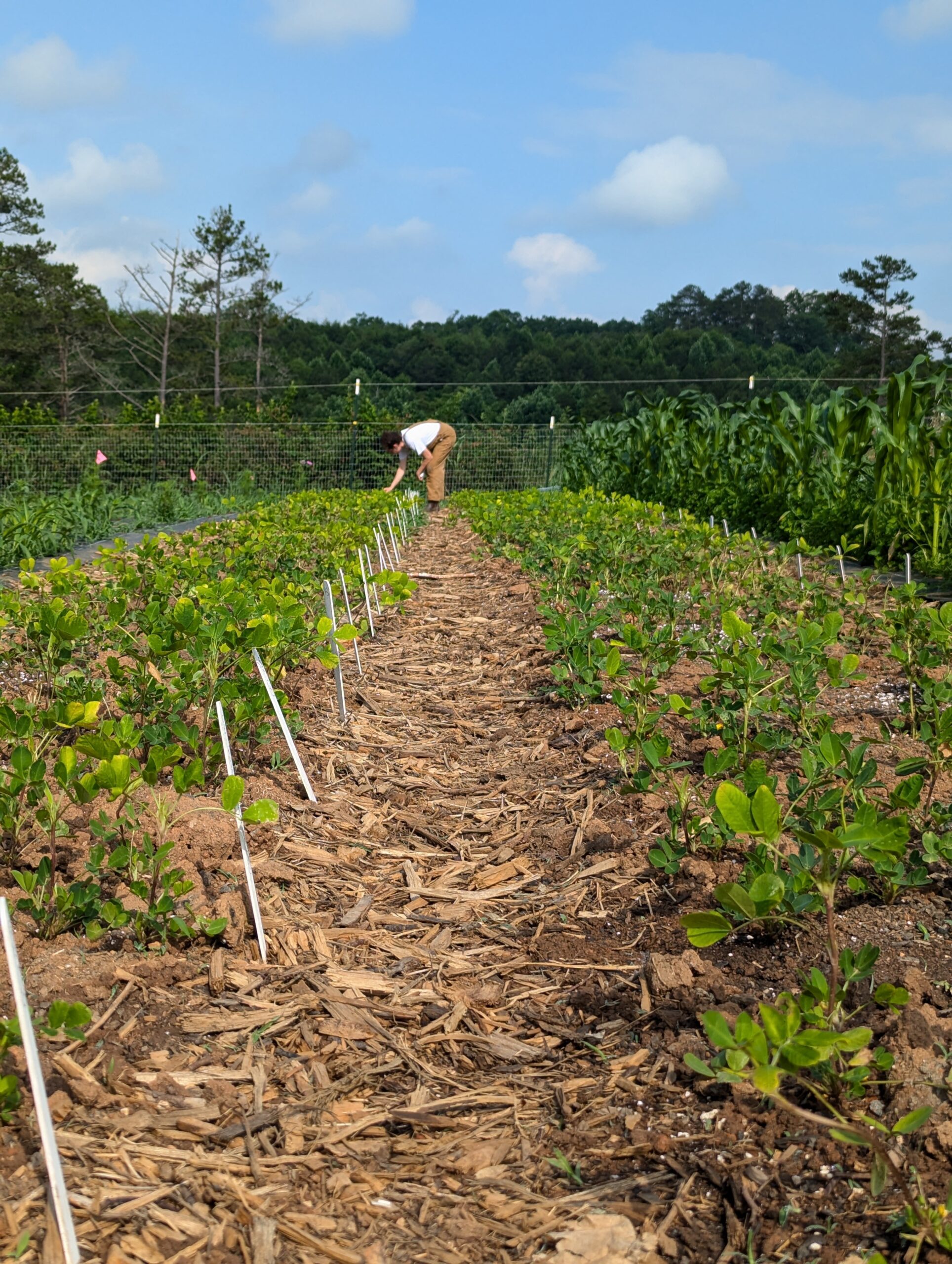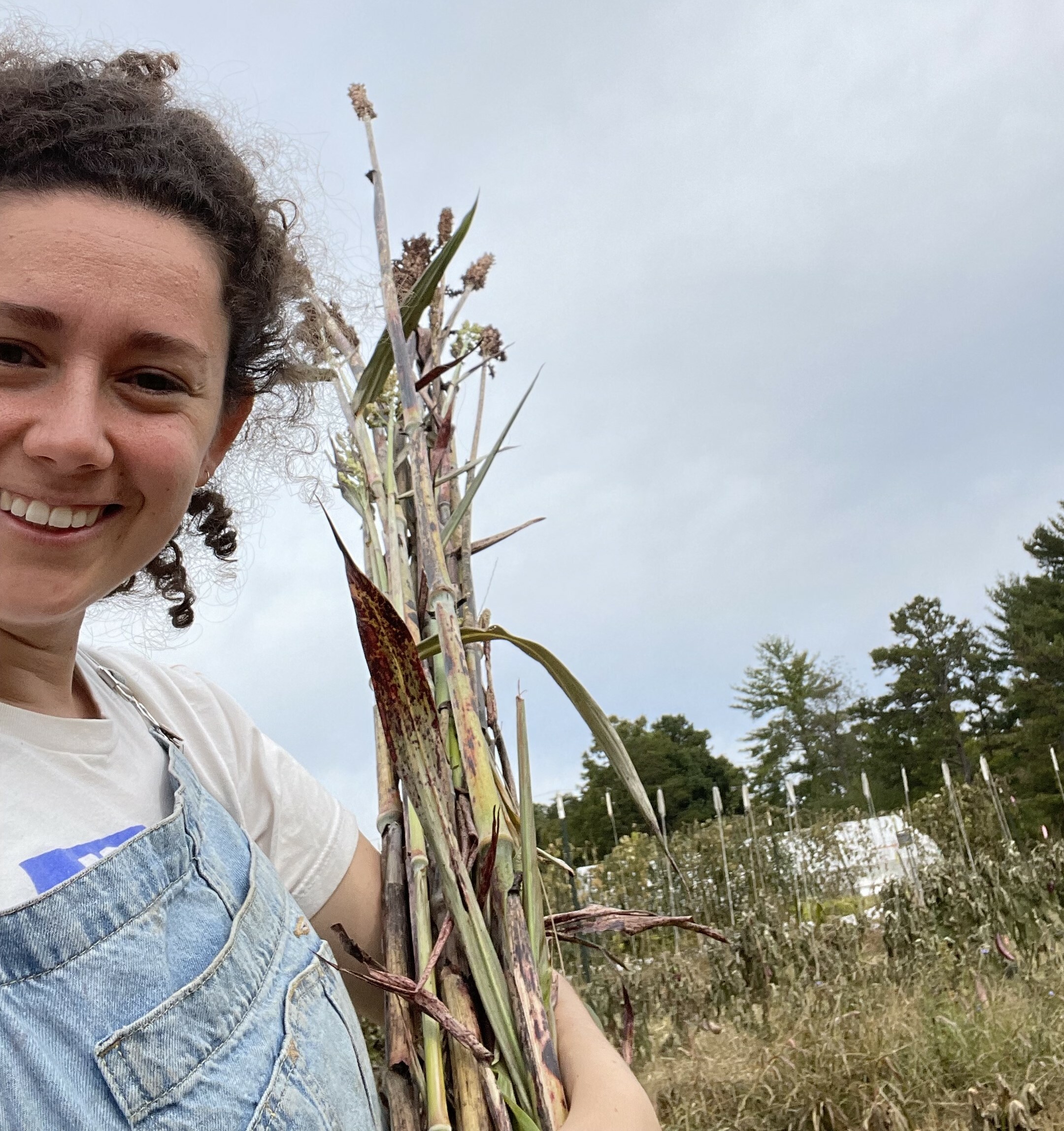
As an ERI/PS2 fellow, I was able to expand upon an ongoing project. After spending the spring semester taking a plant breeding course and working in a peanut breeding lab at North Carolina State University, I was ready to spend the summer outdoors working on the early stages of the Mountain Peanut Project. Throughout the spring I had gathered 73 varieties of peanuts to conduct a variety trial at the Utopian Seed Project’s (USP) experimental farm in western North Carolina. These seeds come from both local farmers in the southern US and mountainous regions around the world, including varieties from as far as Tanzania and Peru. The goal of the project is to identify varieties that perform well in the growing conditions of western North Carolina, with the hope that after a few years of selecting seeds from plants that do well, these peanuts will be grown and distributed through the Appalachian Seed Growers’ Collective (ASGC).
The Mountain Peanut project is an example of Participatory Plant Breeding (PPB), which emerged in the 1980s in response to the growing divide between the practice of farming and the science of plant breeding. PPB is characterized by collaboration between farmers, economists, scientists, and others in order to develop new plant varieties. By engaging in PPB as an anthropological method, I’ve been able to trace how the social aspect of plant breeding and seed farming overlap with the biology of the plants themselves, especially as farmers, breeders, and others contend with increasingly variable climates. By leaning into the collaborative aspect of PPB and USP’s approach to biodiversity, as including not just the varieties but the genes within each variety and the people who cultivate that crop and their broader communities, my hope is that the Mountain Peanut Project will continue to bring together people from around the region who are excited about locally adapted peanuts.
After three months in the field the peanuts are thriving! I’ve been shocked with how well they grow with minimal watering (we’ve had an abnormally hot and dry summer this year) and upkeep. One of the most enchanting aspects of peanuts is that they have tiny yellow flowers that, once pollinated, form a budding ovary called a “peg,” which burrows underground, where the peanut forms. Due to this, we won’t know how successful the trial was until harvest, which will take place before the first frost, likely in early October. Depending on how each variety does, we will save seeds to plant our second year in the spring to build out the population.
Author

Eva Rose Steinberg
PS2 Public Research Fellow
Eva Rose Steinberg is a farmer, seedkeeper, and PhD candidate in anthropology. Based in North Carolina and Georgia, her work examines how plant breeders and seed savers negotiate diversity, purity, and adapting to climate change. She collaborates with the Heirloom Collard Project, the Utopian Seed Project, and is in the process of learning how to breed peanuts.
